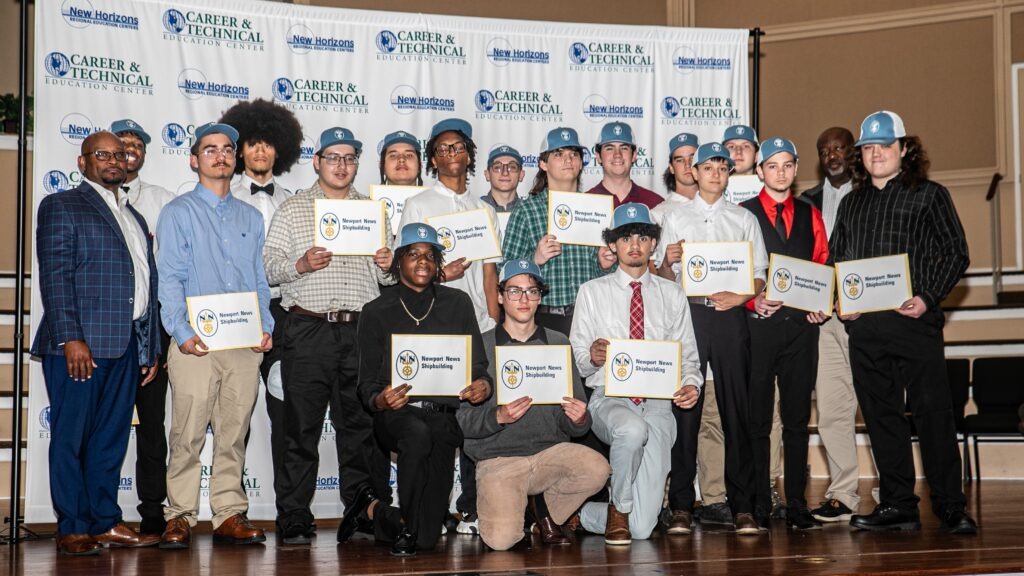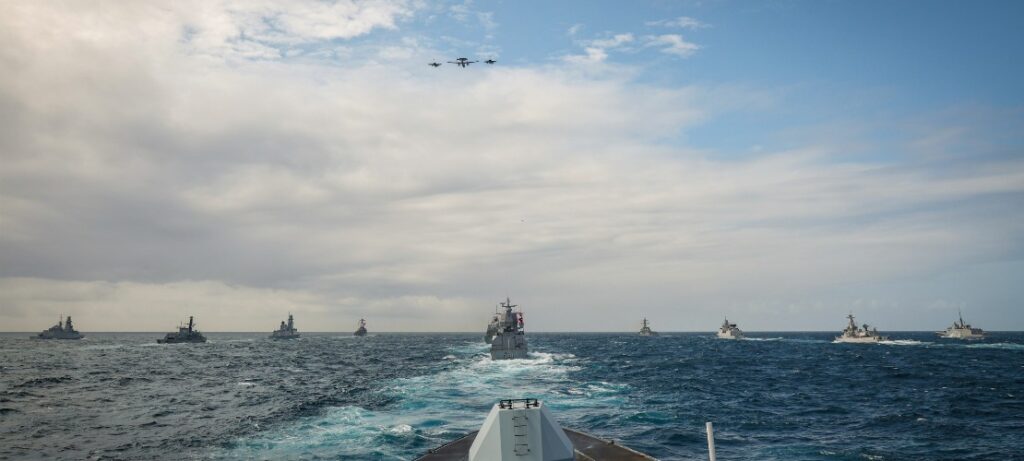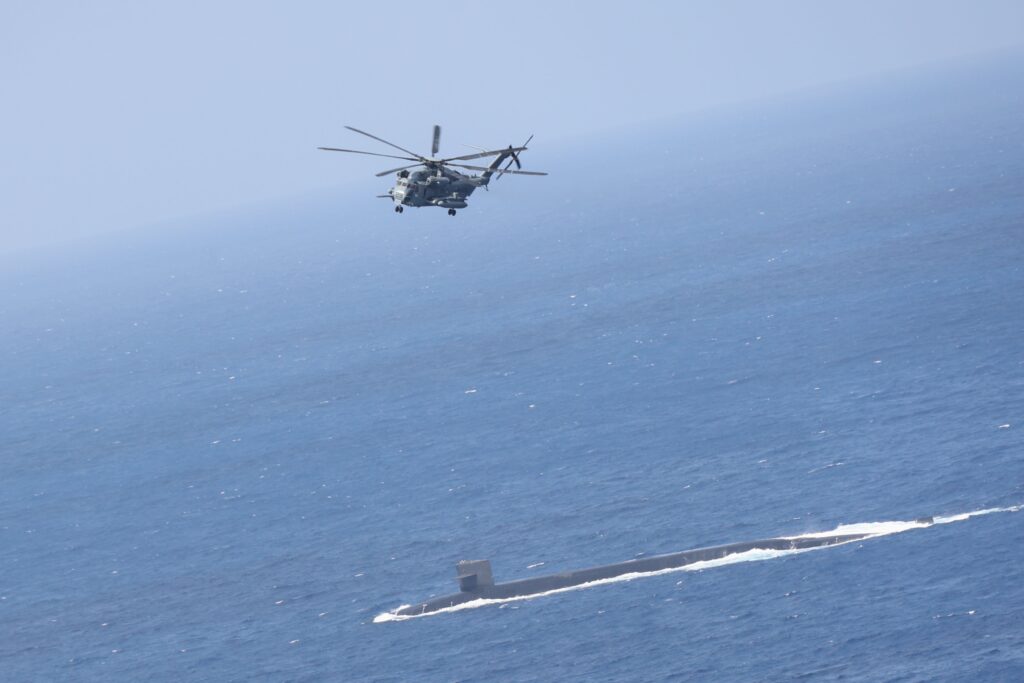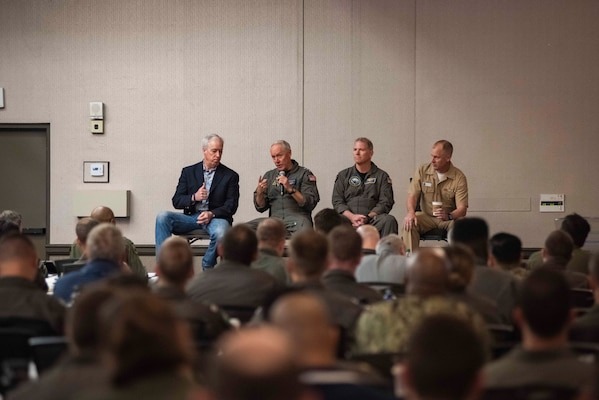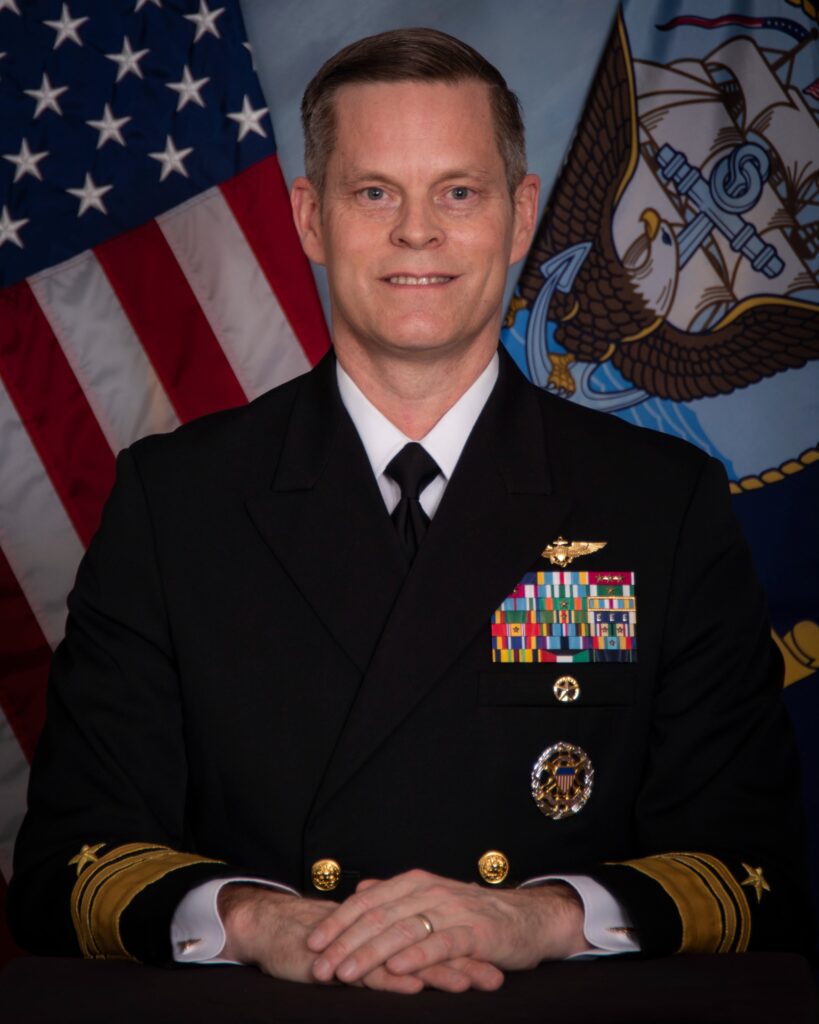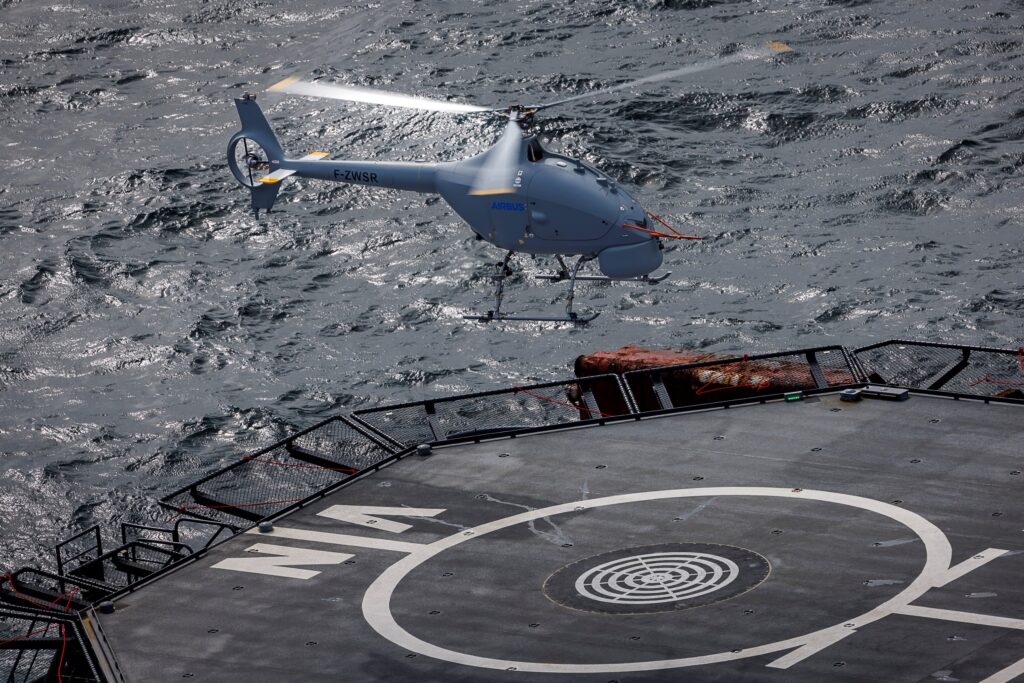Release from Sen. Tim Kaine, D-Virginia
*****
WASHINGTON, D.C. – U.S. Senator Tim Kaine—Chair of the Senate Armed Services Subcommittee on Seapower, which oversees the Marine Corps—joined Senator Joe Manchin (D-WV) and a bipartisan, bicameral group of colleagues in urging Senate Appropriations Committee leadership to continue to invest in the U.S. Marine Corps Force Design initiatives, which is the branch’s restructuring plan to modernize and prepare its forces to counter growing threats from China’s military.
“As Members of Congress, we ask for a definable, applicable, and deliverable vision from our Armed Forces to get after the pacing threat while maintaining our stewardship of the taxpayer funding we’ve been entrusted with. The Marine Corps has delivered. It is now time for us to deliver and provide the support necessary to accelerate the Marine Corps’ full vision of Force Design. We cannot ask our Marines to stand toe-to-toe with our Nation’s adversaries without first standing behind them,” the members wrote in a letter to appropriators.
Force Design requires the Marine Corps to engage in a foundational change in its mission focus, shifting from three decades of sustained land operations to a naval expeditionary force. The Marine Corps has already made significant progress in its modernization efforts, such as becoming more adaptable to maritime spaces, increasing flexibility and adaptability, and investing in new technologies.
The lawmakers also stressed the importance of meeting the required 31-minimum fleet of amphibious ships. They wrote, “Additionally, these capabilities cannot be successfully deployed without the expedited implementation of a 31-minimum fleet of amphibious ships and the Landing Ship Medium.”
In addition to Kaine and Manchin, the letter was signed by U.S. Senators Mike Rounds (R-SD), Angus King (I-ME), Roger Wicker (R-MS), Richard Blumenthal (D-CT), Thom Tillis (R-NC), Mazie K. Hirono (D-HI), Tommy Tuberville (R-AL), and Mark Kelly (D-AZ), as well as U.S. Representatives Jared Golden (D-ME-02), Mike Gallagher (R-WI-08), Seth Moulton (D-MA-06), Michael Turner (R-OH-10), Rob Wittman (R-VA-01) and Trent Kelly (R-MS-1).
Full text of the letter is available here and below.
Dear Chairs and Ranking Members:
We write to you as you consider the Fiscal Year (FY) 2024 Department of Defense (DoD) authorization and appropriations bills, to urge your support of budgetary items that invest or accelerate Marine Corps Force Design initiatives.
The 2022 Annual Threat Assessment from the Intelligence Community (IC) identifies the Peoples Republic of China (PRC) as working to field a military by 2027 designed to deter U.S. intervention in a Taiwanese cross-Strait crisis. The 2022 National Security Strategy (NSS) echoes this sentiment and is reinforced by both the 2018 and 2022 National Defense Strategies (NDS) that identify the PRC as the only competitor with the intent and capacity to reshape the international order. Furthermore, the PRC’s aggressive actions in the Indo-Pacific and significant growth in defense spending have justified the redirection of our National Security priorities. Bottom line, Marine Corps Force Design initiatives have been informed and directed by hard threat data across multiple administrations to accelerate modernization to meet the challenges of the 21st Century environment.
The Marine Corps continues to lead the Joint Force in Service-level modernization and redesign. Last year, we detailed the urgent need to accelerate from sustained land-based operations to maritime campaigns and from non-state actors to peer competitors of China and Russia. This shift imposes a necessity to fully fund Marine Corps force design, talent management, and installations and logistics efforts to keep pace with critical and evolving strategic ends.
Force Design, the Marine Corps’ initiative to deter potential adversaries and effectively fight and win in a future conflict, continues to progress and directly applies the Service’s Title 10 responsibilities within our national security strategy. The Marine Corps is relying on Congress to support this effort, just as we rely on the Marine Corps to be ready when we least expect it and to serve as our Nation’s force in readiness. In prior years, the Commandant of the Marine Corps made difficult investment and divestment decisions that were a departure from institutional and doctrinal norms. Many of these necessary changes were openly challenged. However, we should commend the Marine Corps on its willingness to make difficult decisions for the Nation’s strategic advantage and security.
The Marine Corps’ ongoing implementation of Force Design has prioritized investments towards new technologies, formations, platforms, and capabilities. These prioritized efforts have increased lethality, mobility, and survivability to maintain a competitive advantage over our pacing competitor, China. Force Design, while necessary to compete against current and future adversaries, comes at a cost. A cost the Marine Corps internally managed while balancing their enduring role as the Nation’s global crisis response force. Since its beginnings in early 2020, the Marine Corps has internally allocated funding towards modernized investments with no increase to the Service’s budgetary topline, effectively resulting in more than $15.8 billion in cost savings to the DoD’s topline budget.
The Marine Corps has made significant progress modernizing over the past three and a half years. To remain ahead of our adversaries in an operating environment that evolves at a faster pace than ever before, adaptive and iterative change must be continuous and well-conceived. The Marine Corps’ Campaign of Learning (CoL) guides and informs modernization by providing a disciplined and structured mechanism for evaluation, and the Marine Corps has applied this methodology to ensure its efforts are as efficient and effective as possible. Notable areas of modernization since Force Design began are:
Concepts: The exploration of creative and adaptive concepts that enable Marine, naval, and joint forces. Concepts such as Expeditionary Advanced Base Operations, Stand-in-Forces, and a resilient Global Positioning Network that enable a forward, persistent, and integrated naval defense in depth; enables the fleet and joint force, alongside allies and partners, to win the reconnaissance-counter reconnaissance battle at every point along the competition continuum; and provides a regionally aligned, responsive, and scalable network of material, supplies, resources that enable the deployment, rapid employment, and sustainment of the Fleet Marine Force during competition, crisis response, and armed conflict.
Programs: Investment in relevant and modern programs of record that either provide new capabilities or sustain existing capabilities. The Marine Corps has focused its investments on capabilities that enable littoral movement & maneuver, maritime fires, sensing & information fusing, and command & control. In each of these capability “bins,” the Marine Corps has sought out technologies that will enable the current and future force to succeed. Examples of program investments include the CH-53K King Stallion, Amphibious Combat Vehicle (ACV), Joint Light Tactical Vehicle (JLTV), Navy/Marine Corps Expeditionary Ship Interdiction System (NMESIS), Marine Air Defense Integrated System (MADIS), F-35 Joint Strike Fighter, MQ-9A Extended Range (ER), Ground/Air Task-Oriented Radar (G/ATOR), Family of Integrated Targeting Cells (FITC), and Network on the Move (NOTM).
Experimentation: In line with the Service’s CoL, the Marine Corps pursued constant innovation through deliberate collaboration with research laboratories, industry, and academia after which FMF, joint force, and combatant command testing activities were leveraged during experimentation and wargaming events. These activities have been collectively assessed every quarter to iteratively inform Force Design and Development. Prominent experimentation conducted are:
- Adaptive Threat Force (ATF) – Real world scenario-based training of Marine Corps infantry units to identify adaptability in theoretical future threat scenarios.
- Marine Corps Warfighting Lab (MCWL) Wargaming – Provides data-driven wargaming capabilities to the entire joint force with artificial intelligence adversary integration.
- Infantry Battalion Experimentation (IBX) – The goal of this effort was to examine the utility of specific changes to the infantry in the context of conducting operations against a peer adversary; experiments were conducted with units from each Marine division. Experimentation began in FY21 and will continue into FY24.
- Marine Littoral Regiment (MLR) – Experiments concentrated on developing 3d MLR in Hawaii and in conjunction with regional exercises, such as Balikatan, Kamandag, Keen Sword, and Northern Edge. Experimentation began in FY22 and will continue into FY24.
- Project Convergence (PC) – Experiments focused on joint all domain situational awareness; closing counter air/missile kill webs; joint integrated fires; and generating robust and scalable kill webs to defeat a multi-axis, multi-domain threat in the littorals. PC is a joint force initiative and will continue into FY24.
Force Design in Execution:
- III Marine Expeditionary Force (2019-Present) – The Marine Corps’ only forward postured MEF that is uniquely suited to validate new concepts such as EABO and SIF while supporting naval, joint, and allied and partnered forces with agile, capable, and lethal forces able to operate across the competition continuum.
- Japan-based F-35 JSF (2019-Present) – The second OCONUS-based Marine F-35 squadron reached full operational capability in May 2022, providing increased numbers of lethal 5th generation sensing and strike platforms to the Indo-Pacific.
- Marine Unmanned Aerial Vehicle Squadron 1 (2020-Present) – VMU-1 currently provides daily support to NAVCENT with MQ-9A ER air vehicles, enhancing Maritime Domain Awareness.
- Task Force 61/2 (2022-Present) – A proof of concept that placed Fleet Marine Forces in the Baltic, testing, refining, and validating concepts of employment for maritime domain awareness and closing kill webs, while also conducting real-world, time sensitive reconnaissance-counter reconnaissance that support Sixth Fleet operations.
- Third Marine Littoral Regiment (2022-Present) – 3d MLR was specifically optimized to persist in the Indo-Pacific and is integral to how III MEF competes, deters conflict, and defeats adversaries while reassuring allies and partners.
Force Design 2030 is well underway, and we should fully support the Commandant’s efforts to uncouple from tradition and conventionally accepted doctrine and systems. Additionally, these capabilities cannot be successfully deployed without the expedited implementation of a 31-minimum fleet of amphibious ships and the Landing Ship Medium.
As Members of Congress, we ask for a definable, applicable, and deliverable vision from our Armed Forces to get after the pacing threat while maintaining our stewardship of the taxpayer funding we’ve been entrusted with. The Marine Corps has delivered. It is now time for us to deliver and provide the support necessary to accelerate the Marine Corps’ full vision of Force Design. We cannot ask our Marines to stand toe-to-toe with our Nation’s adversaries without first standing behind them. I look forward to joining my colleagues from both sides of the aisle on this urgent matter.
